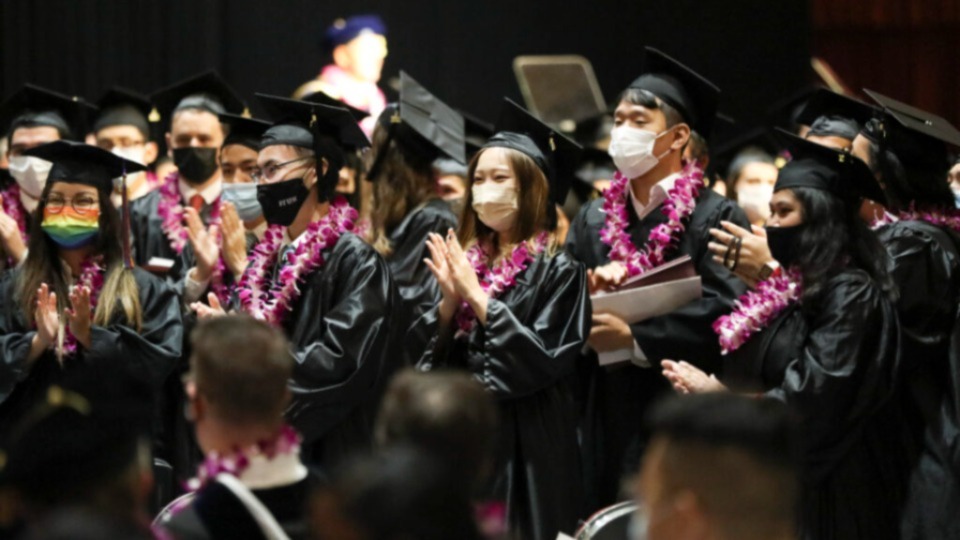
This story appears here courtesy of TheChurchNews.com. It is not for use by other media.
By Rachel Sterzer Gibson, Church News
It’s no secret that higher education in the United States faced many challenges during the pandemic.
As the threat of the coronavirus began to escalate in February and March of 2020, colleges were left reeling. Schools across the country shut down and transitioned to completely remote learning, including the entities within the Church Educational System (CES): Brigham Young University, BYU–Idaho, Ensign College, BYU–Hawaii, Seminaries and Institutes and BYU–Pathway.
Among other challenges, faculty had to adapt in-person curricula and lessons to online delivery within a matter of days; devotionals, performances, events and gatherings were canceled or converted to be online; students were encouraged to leave campus and return home, which created complications with housing contracts and travel; food services had to be adapted or shut down; procedures had to be put in place for those who became ill; and the list goes on and on.
Now, almost two years later, the Church’s campuses and seminary and institute buildings are once again welcoming students, and for the most part, daily operations have resumed but with COVID-19 protocols in place. While the last 20-plus months have certainly been challenging, they have also been a time of discovery and innovation. Some of those discoveries have been overarching while others have been distinct to individual institutions, but all of them have been valuable.
Here are nine lessons from the pandemic within the Church Educational System:
1. Latter-day Saints Value Education
The pandemic emphasized the importance of education in the Church, Elder Clark G. Gilbert, Church Commissioner of Education, told the Church News.
The Chronicle of Higher Education recently reported that national enrollment was down 2.4% for all undergraduate and graduate students at public and private universities in the fall of 2020, while enrollment of first-time, full-time undergraduate students fell 7.9% from one year earlier.
But while many areas of U.S. higher education saw enrollment decline, “we actually saw enrollment grow across the Church Educational System,” reported Elder Gilbert. “It’s a real sign of [Latter-day Saints’] commitment to education and how much our students want to gather and progress.”
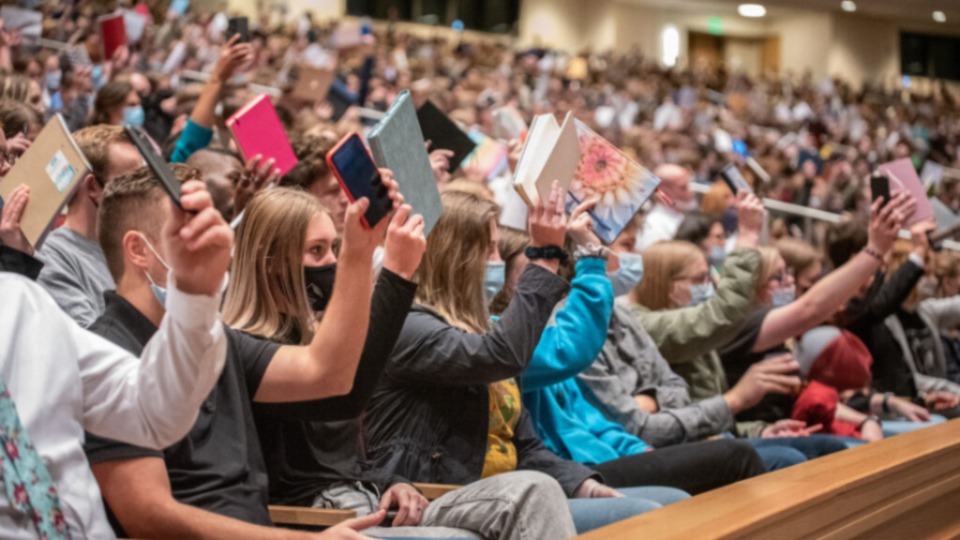
2. Natively Designed Online Courses Can Complement a Student’s Campus Experience
The pandemic also emphasized how much students value online learning, especially when it has been specifically designed to be online, said Elder Gilbert.
CES faculty were “incredibly innovative” in helping students progress virtually, Elder Gilbert explained, but there is a difference between retrofitting a classroom experience and actually designing the learning experience to be online.
“We did a lot of things just in the moment to make it all work, and I think everyone was grateful for that. But the courses that were designed deliberately for a native online experience have been quite effective in realizing key learning outcomes,” Elder Gilbert said.
Students who experience effective learning outcomes are more likely to take an online course during an off semester or to finish their degree while going to work in their native country.
While these options existed pre-pandemic, the COVID-19 period has increased students’ desire to do it more deliberately, Elder Gilbert explained, and for the institutions to find ways to help students continue their progress when they’re not on campus.
“I think we’ll see in a future world more students finish their degrees remotely. A lot of students now realize that natively designed online courses will permanently be a complement to their in-person educational experience.”
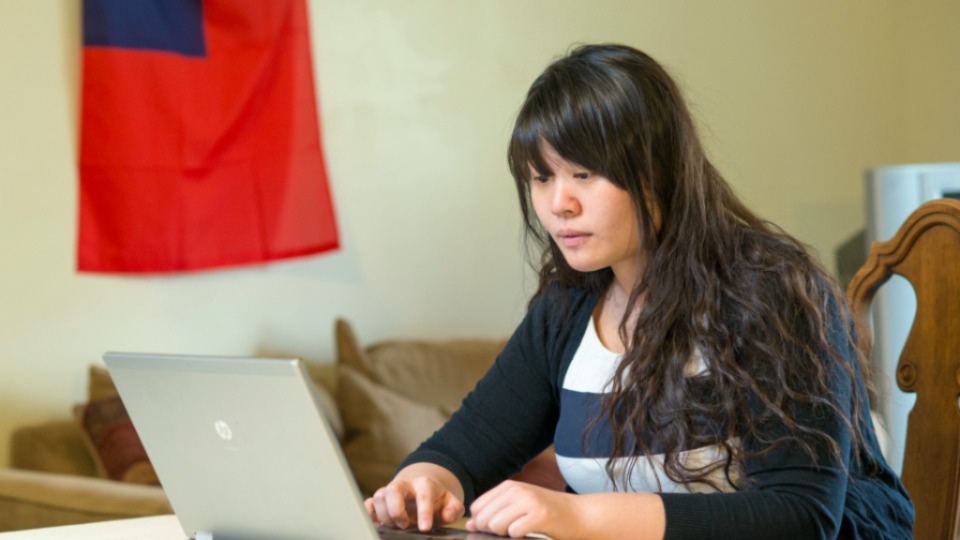
3. Different Challenges Call for Different Solutions
Elder Gilbert noted that he’s had many people ask why the Church was handling the pandemic differently across the different institutions. The answer, he said, “is we are doing the same thing — we’re following local guidelines. And each of these campuses is in a very different community.”
Although each Church educational entity has unitedly faced major pandemic-related disruptions, with unique campuses, student bodies, needs and local regulations, each of the institutions had to also come up with equally unique responses and solutions. As such, they all discovered distinct lessons and takeaways.
For example, BYU–Hawaii operates on a contained island with some of the strictest COVD-19 regulations in the country and little alternative housing to quarantine students. BYU–Idaho operates in a community where its students make up over half of the local population. BYU in Provo operates in a larger community and needs to respond to local requirements in Utah County and in the context of other Utah schools.
4. ‘We’re Better at Technology Than We Thought We Were’
It would be easy to separate BYU’s pandemic experience into two separate time frames — life before COVID-19 and life after COVID-19, said Natalie Ipson, BYU spokesperson.
However, University President Kevin J Worthen charged faculty, staff and students to combine their experience and understanding from before the pandemic with the innovations necessitated during the pandemic to create a better future.
That call has been answered by BYU faculty who are now more adept and comfortable in using technology to enhance learning as well as faculty who may have been used to delivering a pre-scripted lecture and are now trying new things, Ipson said.
The university has also increased its BYU Online program from about 11,000 enrollments pre-pandemic to 26,000 enrollments during fall 2020.
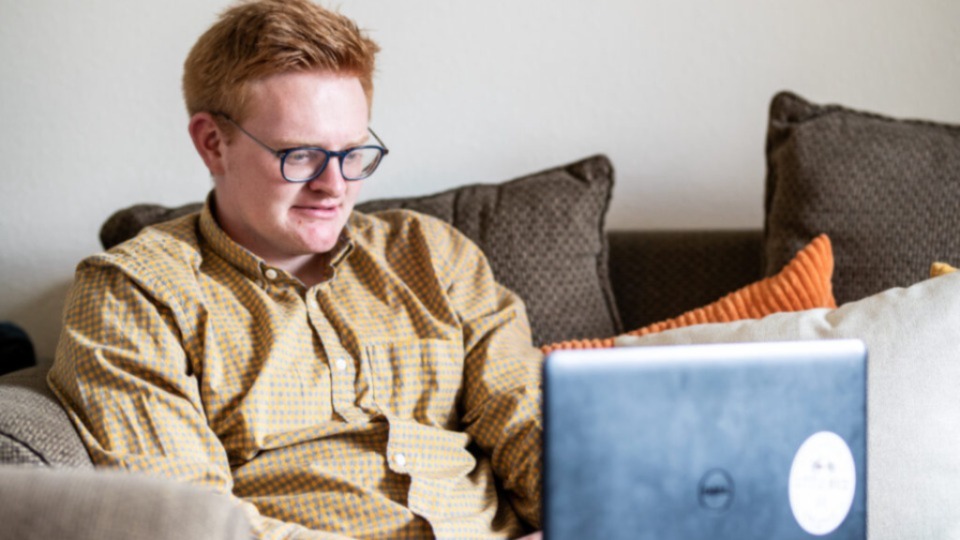
Jon Linford, BYU–Idaho academic vice president, said, “I think we’ve learned that we’re better at technology than we thought we were, which has allowed us to roll with the punches pretty well.”
Faculty, administrators, and students have experimented and tried out new tools and techniques and learned to manage new software and applications to enhance online modalities.
“One discovery for us has been how good of education students can get without being face-to-face,” Linford said.
5. The Importance of a Campus Experience
Although the pandemic has been challenging and exhausting, BYU–Hawaii President John S.K. Kauwe III said it has also given them important insights into their students’ needs and how to best serve them going forward.
For example, as the campus shut down and they encouraged their diverse, mostly international student population to return home and switch to remote instruction, they learned that many of their students were returning to countries with limited or expensive internet access. Many students were facing drastic changes in time zones, including crossing the international dateline. Some faced significant economic challenges in their home countries or were unable to return because of closed borders.
“We started to see how important this university is to them,” President Kauwe said, “not just as a place to get schooling, but as a place of refuge and shelter and protection.”
The university has to operate because of the role it plays in providing the temporal and spiritual foundations for students’ futures, President Kauwe said. “This place is so important to our students, and every aspect of their welfare.”
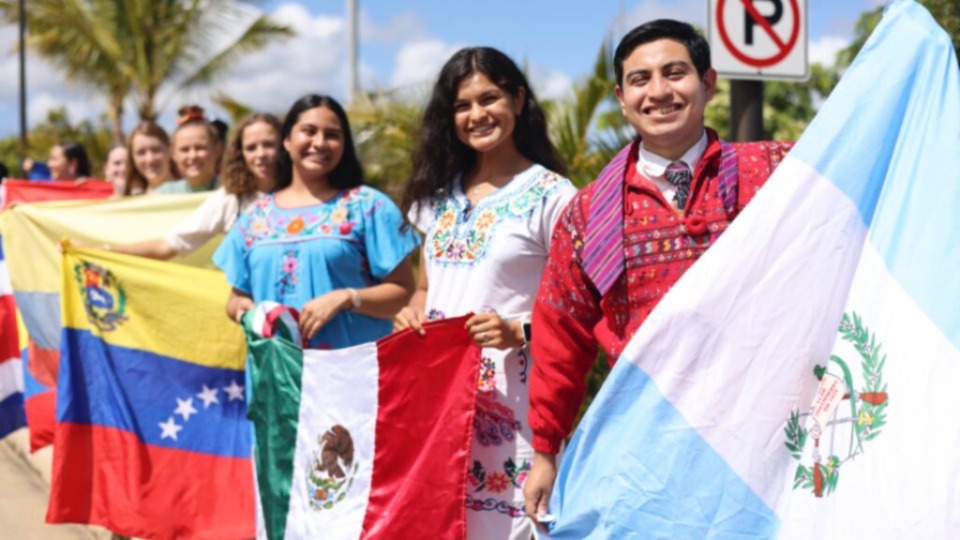
Similarly, Elder Gilbert said the pandemic highlighted the importance of gathering among seminary and institute students. “They really do want to meet and be together. Where we could social distance and mask and vaccinate it’s been a blessing for them to be able to gather again in person.”
Although BYU–Idaho experienced a lot of successes and growth in offering online courses during the pandemic, “there’s still a lot of value for young adults to gather in places like Rexburg or Provo or Laie and work with professors and colleagues and friends and have an educative experience,” Linford agreed.
The pandemic underscored the value of being connected to a community, Ipson noted. With a decrease in campus gatherings, BYU students found unique ways to fulfill the words of BYU’s mission statement, which includes “a loving, genuine concern for the welfare of our neighbor.”
For example, Ipson said, the COVID Outreach program delivered more than 800 care packages to students who were in COVID-19 quarantine or feeling isolated.
“We’re just built to want to be together and connect with one another,” Linford said.
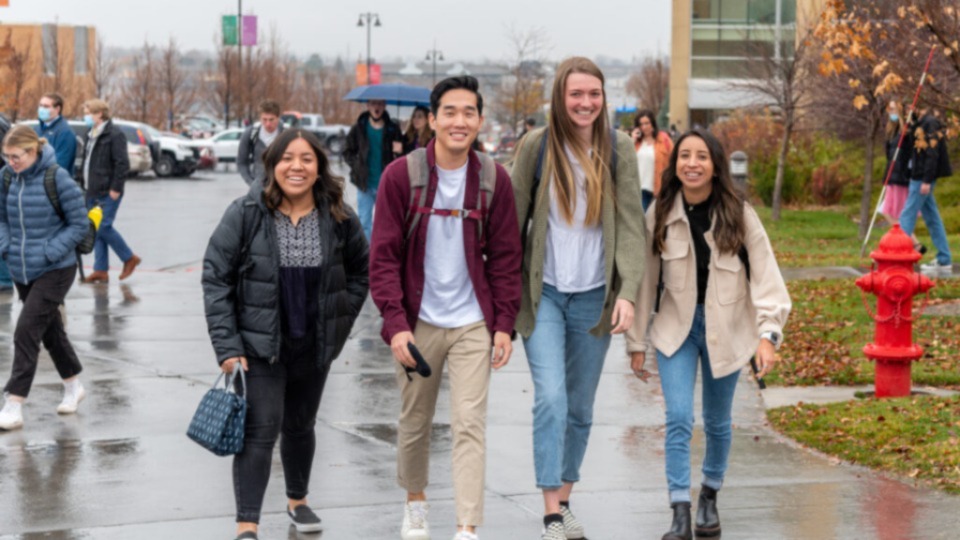
6. ‘The Love of Men Did Not Wax Cold in the Process’
Campuses collect a wide spectrum of individuals with varying opinions and beliefs, Linford noted, and that was especially apparent during the pandemic.
There were definite disagreements about how the pandemic was being handled, but it helped to have strong leadership coming from the prophet and Church Commissioner of Education, and the board of directors, Linford said.
“I think it really helped us weather this a lot better than we would have in other cases. The disagreements were not so sharp; they didn’t persist so long. … The love of a man did not wax cold in this process.”
It’s a blessing to be in an environment where individuals are striving for the Spirit, Linford said, to help withstand the challenges and disagreements, and perplexities presented by the coronavirus.
7. A Pandemic Can’t Stop the Work of the Lord
Ensign College President Bruce C. Kusch described the time during the pandemic as simultaneously “challenging, enlightening and full of blessings.”
On February 25, 2020, the two-year applied college made three significant institutional announcements: First, it would be changing its name from LDS Business College; second, it would now offer a limited number of bachelor’s degrees; and third, it would partner with and offer some of its curriculum through BYU–Pathway Worldwide.
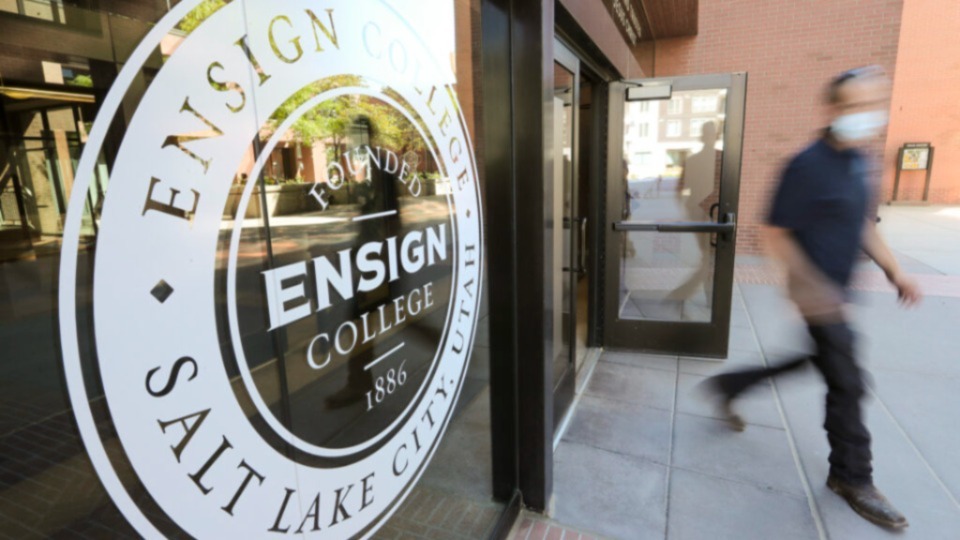
In addition to those things, the college was also preparing for its seven-year accreditation visit. Roughly a month later, by mid-March 2020, however, the pandemic was intensifying, everything was shutting down and everyone was working from home.
Miraculously, everything that needed to get done, got done, President Kusch said. “The doors and windows of heaven just opened and we did not face a single significant obstacle in any of these things: the name change, the bachelor’s degrees, the BYU–Pathway relationship or the accreditation visit.”
As an institution they learned firsthand that a pandemic can’t stop the work of the Lord, President Kusch said.
8. BYU–Pathway Was ‘Prepared and Guided by the Lord’ for the Pandemic
Administrators realized more than ever that BYU–Pathway — with its low cost and online programs — had the flexibility to allow people to start or continue their education despite all the commotion and uncertainties presented by the pandemic.
J.D. Griffith, BYU–Pathway vice president of administration, said BYU–Pathway was specifically “prepared and guided by the Lord.”
Prior to the pandemic, they were already using Zoom and already had chat features and online processes with student support, he noted. Despite obstacles, BYU–Pathway’s growth continued unabated, serving a record 51,583 students in more than 150 countries in 2020.
“We knew this before, but 2020 helped reinforce that this is the Lord’s work and He is involved in the details. He prepared BYU–Pathway to serve more students than ever before when they really needed it,” Griffith said.
For example, starting in March 2020, the Church began systematically sending full-time missionaries back to their home countries. BYU–Pathway was the only Church school that had the flexibility to immediately enroll them for the spring semester.
9. Institutions and Individuals within CES Were Strengthened and Prepared to Meet Challenges
President Kauwe said it’s been amazing to see how the Lord has sustained individuals at BYU–Hawaii, both spiritually and emotionally, through the challenges and extra hours of hard work. “I do feel like we’ve had this increased measure of physical and spiritual and emotional strength to serve our students and provide them with ways to continue to progress at a time when so many are just struggling.”
President Kusch said both individuals at Ensign College and the institution itself were magnified to be able to achieve what prophets, seers and revelators had approved for them to do. “And that probably is the greatest of all lessons for Ensign College in the midst of this pandemic,” he said. “When you’re in alignment and in harmony with the Lord’s prophets, and when you are in alignment with the will of the Lord and you are working according to His timing, then He opens the way to get the things accomplished that He wants and needs for you to accomplish.”
Copyright 2021 Deseret News Publishing Company